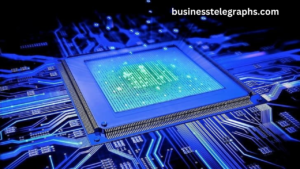BE78N-S7J-E The Silent Force Behind Technological Progress

In today’s rapidly evolving digital landscape, innovation often rests upon invisible elements—those intricate yet fundamental pieces of technology that keep the gears of our digital world turning. One such element is the alphanumeric code, BE78N-S7J-E. At first glance, this combination of letters and numbers may appear random, but it embodies much more than mere characters on a screen. It represents the quiet revolution that powers everything from industrial automation to digital ecosystems.
In this article, we’ll explore what BE78N S7J-E really stands for, why it’s critical in modern technology, and how it’s transforming industries. We will dive deep into the world of unique identifiers, like BE78N S7J-E, and unravel their magic in data management, logistics, software development, and beyond.
What is BE78N-S7J-E?
At its core, BE78N S7J-E is an alphanumeric identifier—an example of a unique code assigned to an object or entity to distinguish it from others in a system. Though it may look like a random sequence at first, codes like BE78N S7J-E are actually an essential part of modern data systems, providing ways to uniquely tag and track elements in digital ecosystems.
These unique identifiers are fundamental to operations across industries. From product tracking in supply chains to the management of large-scale databases, identifiers like BE78N-S7J-E play a role that often goes unnoticed by the end user. Yet, without them, our ability to manage complex data, track assets, or ensure security would be compromised.
The Rise of Unique Identifiers
The need for unique identifiers has been growing in parallel with the rise of digital technology. As the world becomes increasingly interconnected and data-driven, systems require more sophisticated means to manage and track vast amounts of information. This is where BE78N S7J-E and similar codes come into play.
Unique identifiers, often structured as alphanumeric strings like BE78N S7J-E, are used to tag everything from physical assets to digital entities. Think of them as digital fingerprints—each one distinct, ensuring no two entities are confused with one another.
For instance, in industries like logistics, supply chain management, and healthcare, BE78N S7J-E might be the identifier for a specific product, shipment, or even a piece of medical equipment. By assigning a unique code, systems can monitor its movement, usage, or status in real time. This practice has been crucial in improving transparency, accuracy, and efficiency in operations.
Characteristics of BE78N-S7J-E: What Makes it Different?
Though it may appear to be just a string of characters, the design and purpose of BE78N S7J-E (and similar identifiers) are critical to its function. Let’s break down the key characteristics that make these codes indispensable.
Uniqueness
The most fundamental feature of an identifier like BE78N S7J-E is that it’s unique. In a world filled with data, the importance of having distinct identifiers cannot be overstated. Each code represents one and only one entity in a system. Whether it’s a product on a warehouse shelf or a record in a massive database, unique identifiers ensure that no two items are ever confused.
Consistency
Once assigned, BE78N S7J-E remains unchanged throughout its lifecycle. This consistency is vital for ensuring that the system recognizes it as the same entity every time it is referenced. Without this feature, databases or tracking systems would face immense challenges in accurately managing and retrieving data.
Scalability
As industries scale up and more entities need to be tracked, identifiers like BE78N-S7J-E can handle the increased load. Their design allows for the addition of millions of unique identifiers without running into conflicts, ensuring that systems can grow without compromising on functionality.
Simplicity and Flexibility
While BE78N S7J-E may seem complex, it is designed to be easily interpreted and used within the context of a given system. It can also be flexible enough to accommodate various applications, whether it’s in logistics, software management, or healthcare.
Applications of BE78N-S7J-E Across Industries
The real power of BE78N S7J-E and similar codes lies in their versatility. They are applied across numerous industries, from managing physical assets to enabling seamless interactions between devices in the Internet of Things (IoT). Let’s explore some of the major sectors that benefit from these unique identifiers.
Supply Chain Management and Logistics
In logistics, where products are constantly being moved, tracked, and delivered, codes like BE78N S7J-E serve as essential tools for maintaining order and accuracy.
Unique identifiers help companies track every step of the process—from manufacturers to warehouses to retail outlets. For instance, BE78N S7J-E might represent a specific shipment of electronics, ensuring that logistics teams know exactly where it is in the supply chain. This minimizes the chances of lost shipments, delays, or errors.
Moreover, with the growing demand for real-time data, these identifiers make it possible for customers and businesses to track shipments in real time. The ability to do so enhances customer satisfaction and streamlines operations, cutting down on administrative overhead.
Healthcare: Improving Patient Safety and Data Management
In healthcare, the importance of unique identifiers is even more pronounced. Every patient, medical record, prescription, and medical device needs to be uniquely identified to prevent errors and ensure accurate treatment. An identifier like BE78N-S7J-E could be assigned to a specific piece of medical equipment, allowing it to be tracked through the lifecycle of its use in the hospital.
In addition to improving patient care, these codes also play a vital role in ensuring compliance with regulations. Healthcare institutions can track the movement of drugs or equipment, verify patient identities, and manage inventory. As healthcare continues to digitize and incorporate advanced technologies, the role of identifiers will only grow in importance.
Software Development: Ensuring Code Integrity
In the world of software development, BE78N S7J-E could be used to track individual pieces of code, components, or even versions of software. As developers work on complex systems with multiple collaborators, maintaining integrity and avoiding conflicts is critical.
A unique identifier for each component or change in the codebase ensures that teams can trace back any issues to their source quickly. When debugging or troubleshooting, it allows developers to narrow down problems with precision, preventing hours of wasted effort spent searching through unorganized code.
Manufacturing and Industrial Automation
In industrial settings, BE78N S7J-E could be used to track parts and products throughout the manufacturing process. From raw materials to finished goods, these identifiers provide crucial visibility at every step. Automated systems rely heavily on these identifiers to ensure that the right components are assembled, packaged, and shipped.
Furthermore, these codes help optimize production by providing real-time feedback on inventory levels, machinery performance, and quality control. In a modern factory environment, everything from robots to inventory is connected, and unique identifiers like BE78N-S7J-E act as the glue that keeps it all together.
Digital Identity and Online Security
In the digital world, BE78N S7J-E might not represent an object, but rather a user identity in a secure system. Online platforms frequently rely on unique identifiers to ensure that users are who they say they are. This can range from simple user IDs to more complex tokens used for secure authentication and access control.
By tying user data to a unique identifier, platforms can provide personalized experiences while safeguarding against unauthorized access. Whether it’s for banking, social media, or e-commerce, these identifiers are key to securing transactions, protecting privacy, and ensuring smooth user experiences.
The Future of Unique Identifiers Like BE78N-S7J-E
As technology continues to advance, the role of unique identifiers like BE78N S7J-E is becoming even more crucial. Emerging technologies such as blockchain, machine learning, and the Internet of Things (IoT) all rely on identifiers to function efficiently.
Blockchain: Enhancing Security and Transparency
In the blockchain space, unique identifiers ensure the integrity of transactions by associating each block with a distinct identifier. These identifiers are critical in maintaining transparency and traceability, ensuring that transactions are secure and cannot be altered once they’re recorded.
For example, each transaction within a blockchain network may have its own unique identifier, such as BE78N-S7J-E, making it possible to track assets, verify ownership, and prevent fraud in a decentralized way.
Internet of Things (IoT): Interconnected Devices
The IoT revolution is all about devices communicating and interacting with one another. In an IoT system, every device—from smart home appliances to industrial machines—needs to be uniquely identifiable. BE78N S7J-E could serve as a unique identifier for a sensor in a smart factory or a device in a connected home. This helps manage communication between devices and ensures that data is correctly attributed to the right source.
Conclusion
Though seemingly insignificant, BE78N S7J-E (and other unique identifiers like it) plays a fundamental role in modern technological and industrial systems. Whether it’s in supply chain management, healthcare, software development, or security, these identifiers are the backbone that supports data organization, accuracy, and transparency.
As technology continues to evolve, the demand for more efficient and scalable identifier systems will only increase. BE78N-S7J-E, while just one example, represents the many ways that unique identifiers shape our digital lives, from the products we buy to the devices that surround us.
Without identifiers like BE78N S7J-E, our ability to manage and navigate the digital world would be significantly compromised. They may be invisible to most, but their impact is undeniable—and their role in the future of technology is only set to grow.







